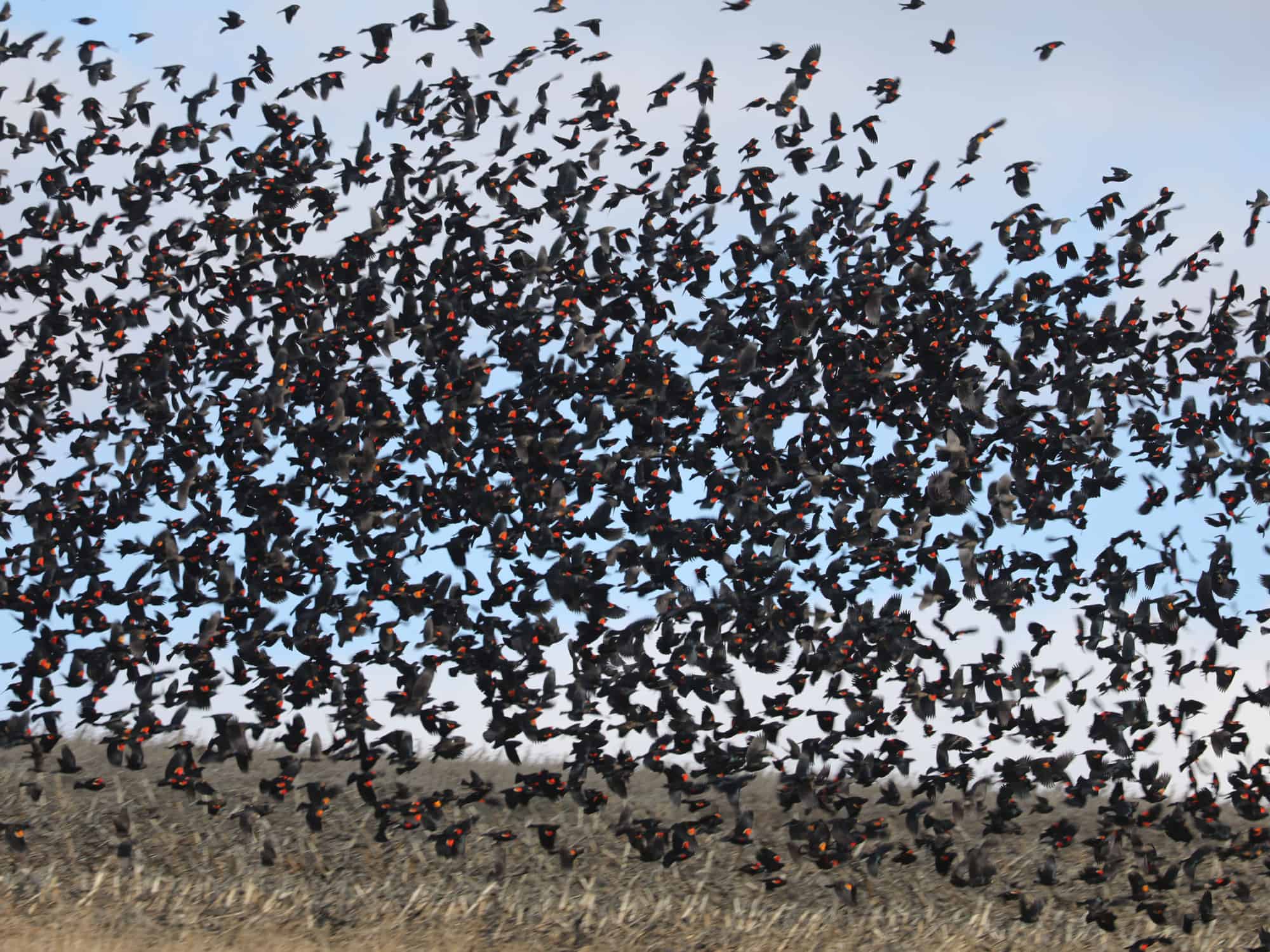Winter Blackbird Flocks
Our local blackbirds spend most of the winter in farm fields. The flocks sometimes number in the tens of thousands, primarily a mix of three native blackbird species (Red-winged Blackbirds, Common Grackles, and Brown-headed Cowbirds) as well as non-native European Starlings (starlings are not members of the blackbird family, but you often find them flocking with blackbirds). Winter blackbird flocks travel in groups to eat up corn and other grains that were lost on the ground during the fall harvest. At night they roost in patches of forest near farm fields. If snow or ice covers the ground, many of these blackbirds find their way back to our yards to visit the bird feeders in large numbers.
I spent some time watching this large flock of blackbirds a few weeks ago. It’s mesmerizing to see such a large group of birds taking off together and circling in unison. With such a large flock, you can occasionally find less common blackbird species like Rusty Blackbirds, or even blackbirds that are usually found in the western United States, like Yellow-headed Blackbirds and Brewer’s Blackbirds. I didn’t see any rare birds this time.
The most exciting part of that birding outing was the end, when a pair of Peregrine Falcons swooped into view. The entire flock of blackbirds took off together, avoiding the falcons as each made several attempts to capture a blackbird. Within a few minutes, there wasn’t a blackbird in sight as the flock disappeared over a nearby hill. The unsuccessful falcons perched in a distant tree, resting up for future hunting attempts.
Winter Blackbird Flocks
Our local blackbirds spend most of the winter in farm fields. The flocks sometimes number in the tens of thousands, primarily a mix of three native blackbird species (Red-winged Blackbirds, Common Grackles, and Brown-headed Cowbirds) as well as non-native European Starlings (starlings are not members of the blackbird family, but you often find them flocking with blackbirds). Winter blackbird flocks travel in groups to eat up corn and other grains that were lost on the ground during the fall harvest. At night they roost in patches of forest near farm fields. If snow or ice covers the ground, many of these blackbirds find their way back to our yards to visit the bird feeders in large numbers.
I spent some time watching this large flock of blackbirds a few weeks ago. It’s mesmerizing to see such a large group of birds taking off together and circling in unison. With such a large flock, you can occasionally find less common blackbird species like Rusty Blackbirds, or even blackbirds that are usually found in the western United States, like Yellow-headed Blackbirds and Brewer’s Blackbirds. I didn’t see any rare birds this time.
The most exciting part of that birding outing was the end, when a pair of Peregrine Falcons swooped into view. The entire flock of blackbirds took off together, avoiding the falcons as each made several attempts to capture a blackbird. Within a few minutes, there wasn’t a blackbird in sight as the flock disappeared over a nearby hill. The unsuccessful falcons perched in a distant tree, resting up for future hunting attempts.
About The Author
Dan Hinnebusch is the Ornithologist for Wild Birds Unlimited. Click to learn more.





